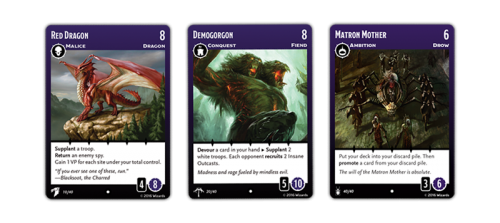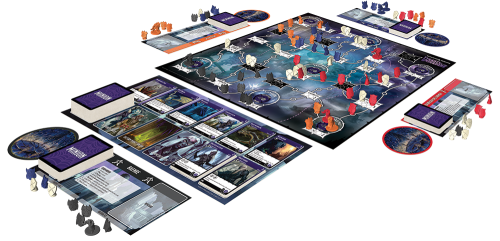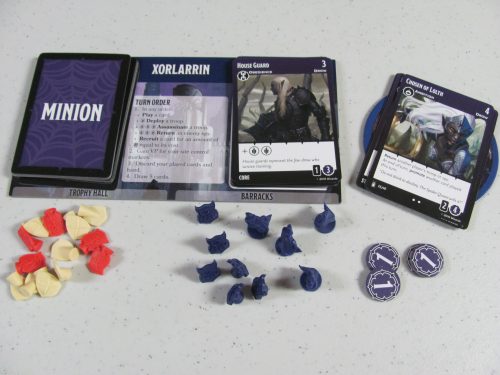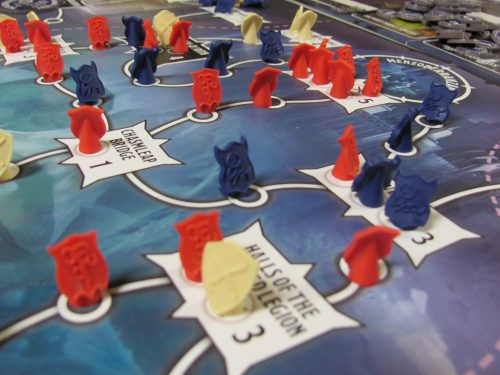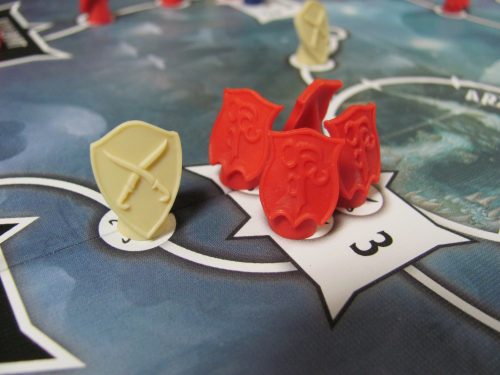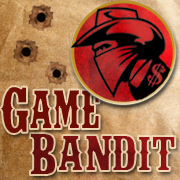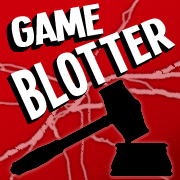Thieves Guild is Next Dungeons & Dragons Board Game from Gale Force Nine
07 Mar
Posted by David Miller as Modern Board Games, RPGs
 Gale Force Nine has another Dungeons & Dragons board game in the works. Thieves Guild, scheduled for an October release, will see the players as thieves, competing to complete quests, develop renown, and achieve the highest rank in the thieves guild. The game’s action will be set in the Forgotten Realms with the board a map of Baldur’s Gate.
Gale Force Nine has another Dungeons & Dragons board game in the works. Thieves Guild, scheduled for an October release, will see the players as thieves, competing to complete quests, develop renown, and achieve the highest rank in the thieves guild. The game’s action will be set in the Forgotten Realms with the board a map of Baldur’s Gate.
If you can’t wait for October, Gale Force Nine should also have this April two expansion cards sets for Tyrants of the Underdark, Aberrations and Undead.
- Comments Off on Thieves Guild is Next Dungeons & Dragons Board Game from Gale Force Nine
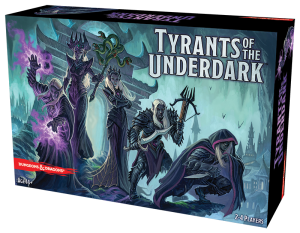 The latest Dungeons & Dragons board game, Tyrants of the Underdark, should arrive at retail within a few weeks and if I didn’t already have a copy it would be for me a must-buy. The game is substantive but not difficult and has a nice balance of interesting mechanics and thematic conflict. I played it with a friend the first time and we immediately wanted to play it again and again.
The latest Dungeons & Dragons board game, Tyrants of the Underdark, should arrive at retail within a few weeks and if I didn’t already have a copy it would be for me a must-buy. The game is substantive but not difficult and has a nice balance of interesting mechanics and thematic conflict. I played it with a friend the first time and we immediately wanted to play it again and again.
Despite its D&D heritage, Tyrants of the Underdark isn’t an adventure game. It makes use of the Forgotten Realms setting but instead of following the RPG style draws on deck-building, area control, and war game inspirations to represent the political maneuverings and intrigue of dark-elf drow society. Players work to place spies, control underground cities, recruit minions, and assassinate opponents. They do this in game terms with two resources: influence for deck-building and power for maneuvering on the board.
The deck-building portion works pretty much like you’d expect. There’s a six card market from which players purchase minion cards representing drow, dragon, elemental, and demon factions. Each turn a player draws five cards from their assembled deck, using the actions and resources on those cards to purchase additional cards, place pieces on the board, capture opponents’ pieces, etc.
On the board are a number of Underdark cities and the pathways connecting them. Control of a city goes to the player with the most troops inside. Getting there, though, normally requires deliberate expansion along the pathways. That is, until one manages to place a spy, which doesn’t exert any control itself but does allow a player to leapfrog intervening enemies and open spaces.
The winner is determined by victory points awarded from a variety of sources. Every city awards victory points to the player controlling it. So do most of the minion cards. One thing I found particularly interesting about the game is how cards a player has managed to remove from their deck (an important strategy in many deck-building games) go up in victory point value. Rather than being considered trashed, the game treats them as if they’ve been promoted to the drow house’s inner circle.
In terms of complexity, Tyrants occupies a middle ground. My friend and I figured out how to play pretty easily from a quick read through the rule book. Only after that first play-through, however, did we start to recognize some of the important strategies. For me at least, though, that’s exactly how the best games work.
Tyrants of the Underdark is a Wizards of the Coast design but is being published by Gale Force Nine. As I said, it should be available at retail within the next few weeks. MSRP is $75 and the game handles 2-4 players in around an hour.
A complimentary copy of Tyrants of the Underdark was provided by Gale Force Nine for review.
- Comments Off on Tyrants of the Underdark Preview
Trending
- Massdrop.com
- Oh the Irony—Illuminati Card Game Continues to Inspire Conspiracy Theorists
- Footprints, an Educational Ecology Game
- Home
- USPS Adds Board Game Flat Rate Box
- Baila, the Estonian Drinking Card Game
- Crystal Caste Wins Dice Patent Suit Against Hasbro
- Mirror Game, Red and Blue
- Are Board Games Dangerous?
- Board Games Based on Hindu Mythology
Archives
Most Popular Articles
- Oh the Irony—Illuminati Card Game Continues to Inspire Conspiracy Theorists
- The 20 Most Valuable Vintage Board Games
- The Truth About Dominoes On Sunday in Alabama
- Sequence Game, and Variants
- USPS Adds Board Game Flat Rate Box
- Baila, the Estonian Drinking Card Game
- The 13 Most Popular Dice Games
- Are Board Games Dangerous?
- Guess Who? The Naked Version
- What Happened to the Jewel Royale Chess Set?
Recent Posts
- Toy Fair 2019—Breaking Games
- Talisman Kingdom Hearts Edition
- Toy Fair 2019—Winning Moves
- Toy Fair 2019—Games Workshop
- Toy Fair 2019—Star Wars Lightsaber Academy
- Toy Fair 2019—Stranger Things Games
- Toy Fair 2019—HABA
- Licensing Roundup
- Game Bandit
- 2018 A Difficult Year For Hasbro But Not For D&D Or MtG
Recent Comments
- on Toy Fair 2019—Winning Moves
- on Game Bandit
- on Second Look—Dungeons & Dragons Waterdeep Dragon Heist
- on Crowdfunding Highlights
- on Beyblade SlingShock
- on Game Bandit
- on Game Bandit
- on Watch This Game!, the Board Game Review Board Game
- on Second Look—Vampire: The Masquerade 5th Edition
- on Palladium Books Loses Robotech IP License, Cancels Five-Year-Overdue Robotech RPG Tactics Kickstarter

